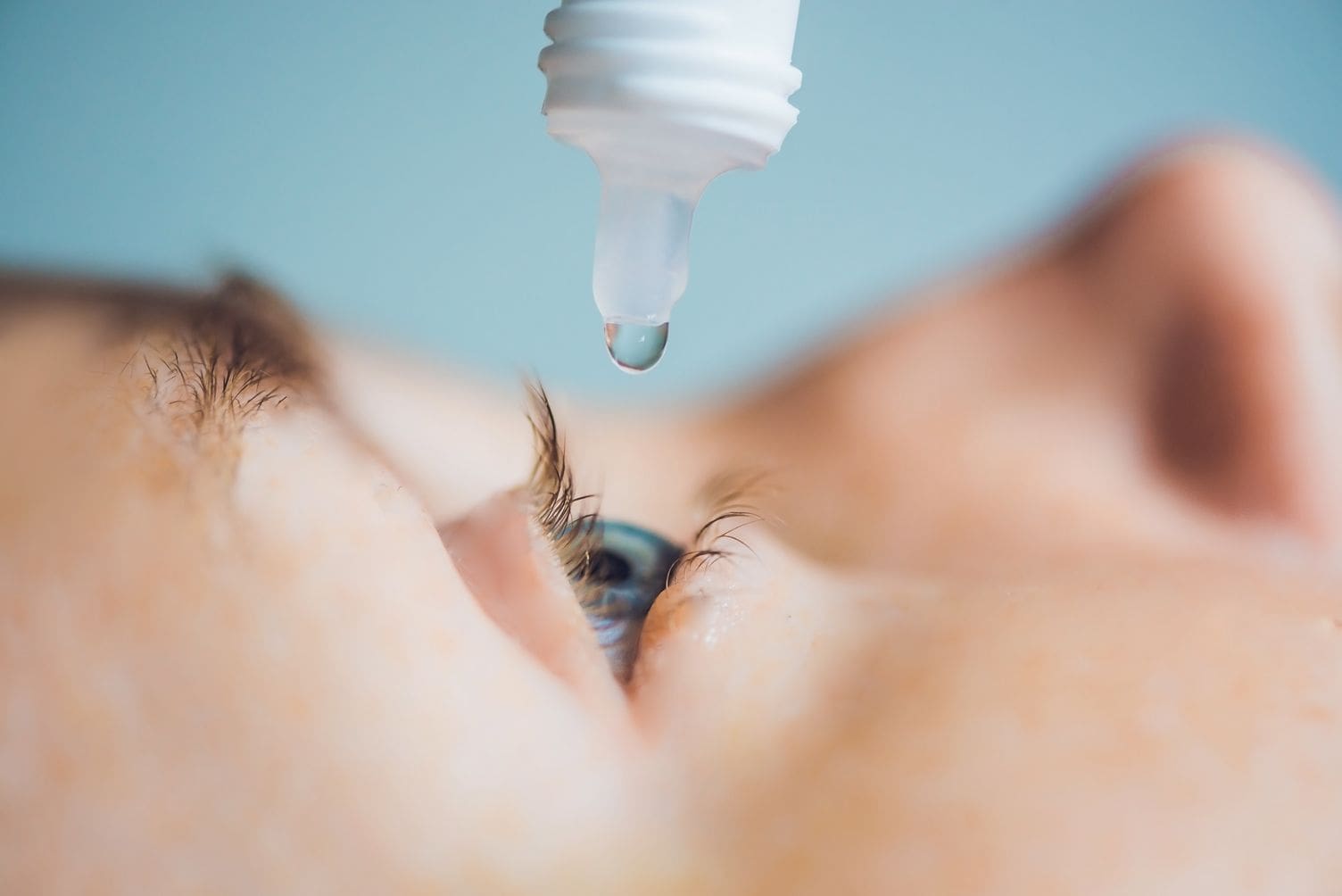When your tears don’t provide adequate moisture for your eyes, you may notice symptoms of dry eye. One in 5 adults may be affected by dry eyes, so it’s a common condition.
Symptoms of dry eyes
Symptoms include eyes that feel dry, tired, gritty and uncomfortable. There may be a sensation of burning or scratchy eyes, or that something is in the eye. Chronic (ongoing) issues may cause photophobia – sensitivity to bright light.
Dryness can be caused by environmental or medical factors and can significantly impact on your daily life. Don’t leave these untreated, as un-lubricated eyes may become damaged or infected.
Read on for our tips on how to help relieve and prevent dry eyes.
1. Wear wrap-around sunnies
Wind and sunlight can aggravate your eyes. Protect your eyes from the sun and wind by wearing wrap-around sunglasses.
2. Avoid dry environments
Low humidity can dry the eyes, so avoid air conditioners that dry the air (and eyes) if you can. A humidifier can help add moisture to indoor air when it’s dry.
3. Take a break from screen time
Frequent computer use, reading or any task that requires visual concentration can cause eye dryness. Take regular breaks and close your eyes for a few minutes.
4. Keep the air off your face
Direct the air from fans, heaters and hair dryers away from your eyes.
5. Check your medicines
Certain medicines (e.g. antihistamines, decongestants, some medicines for treating high blood pressure (beta blockers) and certain antidepressants (tricyclic antidepressants, SSRIs)) can cause the eyes to feel dry. Talk to your doctor or pharmacist about possible alternatives.
6. Up your omega-3 fatty acid intake
Increase your intake of omega-3 fatty acids (either through diet or supplements) to help prevent dry eyes. Foods that are high in omega-3 fatty acids include fish, walnuts and vegetable oils.
7. Use eye drops or ointments
Try using artificial tears or lubricant to help relieve dry eyes. Eye drops (e.g. Cellufresh Eye Drops, Murine Dry Eyes) and ointments (e.g. Ircal, Poly Visc Lubricating Eye Ointment) are available from the pharmacy. Preservative-free formulations are available for people who are allergic to the preservative in eye drops.
8. See your doctor
There are certain medical conditions that are associated with dry eyes, including rheumatoid arthritis, Sjogren’s syndrome, lupus, eyelid problems and diabetes. Treating these medical problems can help treat or improve your eyes.
Dry eyes are common in women after the menopause.
9. Quit smoking
Exposure to smoke can aggravate, so stop smoking if you smoke, and avoid smoke from others.
Your doctor will be able to help you with advice and a plan to quit smoking. You can also contact Quitline on 13 QUIT to talk to a counsellor. The Federal Government has also produced an app – My QuitBuddy app, with tips and tracking for quitting smoking.
Be sure to see your doctor if:
- your symptoms don’t improve
- you have sensitivity to bright light
- you have eye pain
- your vision is blurred or your eyesight is affected in some other way
- your eyesight is deteriorating
- your eye is red
- your eye has a discharge
- your eyelids are sticking together.
See your doctor urgently if your vision becomes affected, deteriorates, or your eye becomes painful or red.
What type of doctor deals with dry eyes?
Your General Practitioner will be able to advise you on treatment for your problem, and also will investigate what the cause is. They can also refer you to an Ophthalmologist (specialist eye doctor) if the problem is severe or doesn’t respond to treatment.
Optometrists, the healthcare professionals who perform eyesight examinations, and prescribe and dispense glasses and contact lenses, are often asked about dry eyes. Pharmacists are also well placed to advise in the case of mild case – and there are many artificial tears products available from the pharmacy.
Causes of dry eye
Normally, when you blink your eyelids, tears are spread across the cornea – the front of the eye. The excess tears drain away through the small ducts in the inside corners of your eyelids.
Dry eye disease may be due to either reduced production of tears from the tear glands (less common) or increased evaporation of tears (more common – accounts for more than 85% of cases). Sometimes both types of problem exist together.
Blepharitis is another eye condition, which is often associated with dry eye.
Risk factors
Women are much more at risk than men, and the risk of dry eye disease increases with age, regardless of gender. After the menopause women are much more prone to dry eye. This is thought to be due to changes in the balance of hormones.
Some autoimmune diseases may increase the risk of dry eye disease. Long -term wearing of contact lenses also puts a person at greater risk of having dry eye.
Prolonged screen time on computers leads to reduced blinking and is a risk factor for developing dry eyes.
Refractive eye surgery, such as LASIK, can lead to decreased tear production and so cause dry eyes.
Tests and diagnosis for dry eye
There are several tests and investigations that an ophthalmologist can do to diagnose the problem. They can examine the quality of your tears and how quickly you produce tears.
They can stain your cornea temporarily and examine it with a slit lamp, to assess how dry your eyes are.
They may do a Schirmer test, which uses paper strips inserted into the eyes to measure the production of tears.





